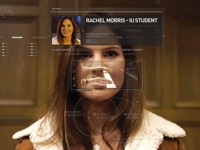
STORY & GRAPHICS BY
ANDREW WILLIAMS
APRIL 15, 2019
Alex Deryn never met a problem she couldn’t outrun.
A track star from West Lafayette, Deryn is used to pushing herself to the limit and knows the feeling of her heart beating out of her chest and never knowing when she’s hit her limit.
Deryn said that all changed once she bought an Apple Watch last year after being recommended the device by her cousin.
“It is a little bit of an addiction because I wear it so often,” said Deryn, a sophomore at Indiana University. “I’m always checking my calorie count and how active I am.”
The Apple Watch, which was first released in 2015, is advertised to assist with health and fitness maintenance and features an EKG scanner and heart rate monitoring. With heart disease as the leading cause of death worldwide, those claims are more relevant now than ever.
Deryn echoed their statements and said the watch also manages her lifestyle by alerting her to stand up and telling her when she should go for a walk. Despite her background, Deryn said she believes the watch has made her much more active.
“I would’ve loved to have had the watch while I was in high school,” said Deryn, who ran the 400-meter on her school’s track team. “I feel like it would’ve pushed me a little bit harder.”
At night, Deryn said that she sets activity goals for herself with the watch.

“You set a goal and if you don’t reach it you feel like crap about yourself.”
- Alex Deryn, Sophomore
“You set a goal and if you don’t reach it you feel like crap about yourself,” she said. “That makes me work harder at the gym.”
Deryn, who exclusively uses Apple products, said that she wasn’t sure if she would’ve bought one if the watch wasn’t made by Apple.
“I have a HomePod, a Mac, and an iPhone,” she said. “Let’s say if Android released a watch, I don’t think I would purchase it.”
Deryn isn’t the only person who has fallen into what is now known as the “Apple ecosystem”. The Apple ecosystem is a construct that refers to how Apple products work together to create an optimal user experience.


